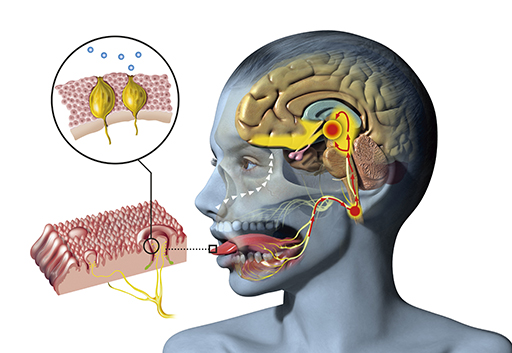2.3 Smell and taste
Smell and taste are enormously important to development. Babies can identify their own mother’s breast milk from very early on. Indeed, newborn babies recognise their mother by smell.
The sense of smell begins in your nose which has hundreds of tiny receptors. Different odour molecules have different features and excite specific receptors more or less strongly. This is interpreted by the brain to perceive the ‘smell’.
Taste is received through sensory organs called ‘taste buds’ which are concentrated on the upper surface of the tongue. Smell and taste are closely linked, young children soon learn to recognise foods they like and dislike, by both taste and smell. You might notice a toddler refusing to eat food before they have even tasted it – this may be because they dislike the smell.
-
Think about the sorts of foods you like or dislike and reflect on why that is. Is it the smell, the taste or possibly even the texture that you dislike?

